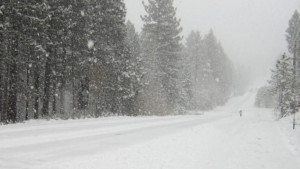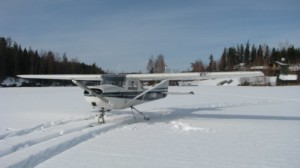If you’re in Colorado where we are, then you know that we see ol’ man winter every year. In general aviation, winter means something different than to the commercial operators. When the storm arrives, it typically mean were grounded and our planes stay locked up in hangars. Here at our Colorado flight school, we keep our fleet ready for flight. When you consider the impact that a snowstorm has on you, you should have the information you need to make the GO/NO GO decision.
Winter storms commonly result in commercial air travel delays for a ton of reasons, but it’s not just snow that causes issues for aircraft. There are a multitude of winter weather problems that aviators can face. Here are a few of them.
Snow storms
Snow-storm conditions cause reduced visibility both in the air and on the ground. Pilots can usually work around that in flight using an Instrument Certificate. The most overlooked issue is the reduced stopping distance that snow and ice causes on runway surfaces. The lack of ability to stop is the leading factor in aircraft mishaps within the airport environment. Stopping an aircraft can be severely reduced with even a 1/8” of snow. After a slight increase of temp that snow can turn to ice. These conditions can show up on runways when you least expect it, making it difficult for pilots to operate the airplane.
Freezing temperatures
Lycoming Aircraft Engines have cold weather starting and pre-heating procedures that we have included in every aircraft dispatch book at our Colorado flight school (these procedures can be found in the first few pages of the aircraft dispatch book). Cold weather is really tough on engines and aircraft systems, making it necessary for pilots to preheat the aircraft engines before taking off. We have engine pre-heaters that are installed and should be plugged in so that the engine can warm up for takeoff.
Temperatures below freezing can also mean that airframe and induction icing (Carb Icing) can occur. Airframe icing is very dangerous to an aircraft. It increases drag and decreases lift, often to the point where an aircraft will be completely unable to make the required amount of lift for flight. And induction icing can mean decreased power output making takeoff distances increase, or complete engine failure.
Snow
Snow and snow fog reduces visibility on the ground and in the air, which IFR pilots can handle. However, the most experience IFR-rated pilots are limited by both personal limits and the aircraft’s equipment. When visibility is low the aircraft and the pilot maybe beyond limits for landing and taking-off.
An aircraft with a WAAS-certified GPS, for example, can maneuver the aircraft on an approach to land during worse weather conditions than a non-WAAS aircraft could. Aircraft with CAT 3 approach ability and equipped with an auto-land system, such as is found in some airliners, can hypothetically land in ZERO VIS conditions. For the most part, those of us that are flying around out there adhere to higher weather minimums applicable to both our level of skill and the aircraft’s equipment. And for most of us, this means avoiding flights in low fog or blizzard conditions.
Rain in low temps
Freezing rain is the most hazardous of the wintry weather flying conditions. It can rapidly build ice on the aircraft behind any protected anti-ice or de-ice area. This can happen quickly and can lead to rapid loss of lift, a heavier airplane, and the inability to stay flying.
With winter, hazardous weather flying conditions you can see how air traffic delays accrue so rapidly. Pilots must exercise extreme caution and solid decision-making skills when these conditions are present. Before you make the choice of flying in wintry conditions, make sure you have the right equipment and speak to your local Colorado flight school for tips! As always, safe flying!




